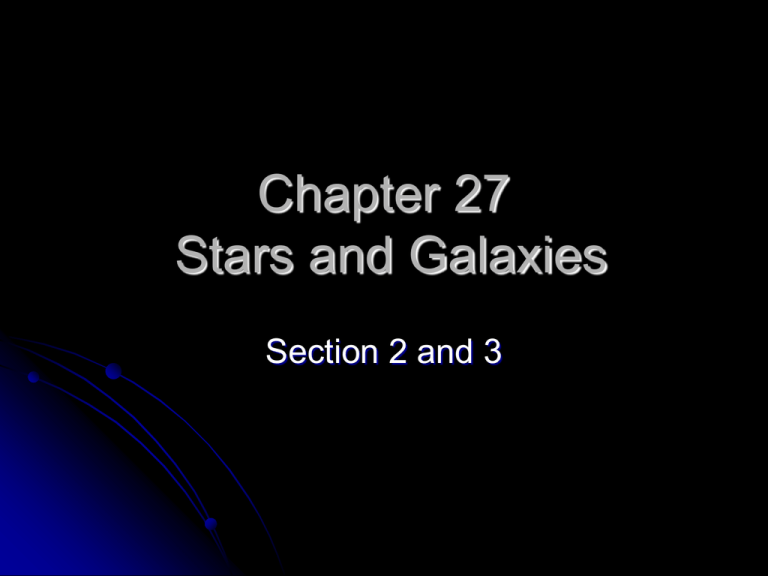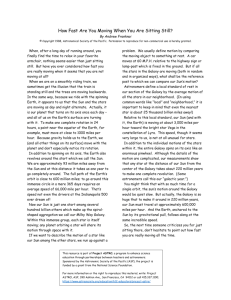Chapter 27 Stars and Galaxies
advertisement

Chapter 27 Stars and Galaxies Section 2 and 3 27.2 Stellar Evolution A star begins in a nebula, which is a cloud of gas and dust Gravity causes the gas and dust to compact. The shrinking, spinning region begins to flatten into a disk with a central concentration called a protostar 27.2 Stellar Evolution The second and longest stage in the life of a star is the main-sequence stage Main-sequence stars do not expand because the force of gravity pulls the matter inward. Some white dwarfs will just cool and die, they are then called black dwarfs 27.2 Stellar Evolution Some white dwarfs do not just cool and die. They will have one or more large explosions and become a nova A supernova is a star that has such a tremendous explosion that it blows itself apart. Before a supernova all of the stars elements will be fused into iron 27.2 Stellar Evolution After an explosion, the core of a supernova may contract into a very small but incredibly dense ball of neutrons, called a neutron star Some neutron stars emit two beams of radiation that looks like a lighthouse, these are called pulsars 27.2 Stellar Evolution Some massive stars produce leftovers that are too massive to become neutron stars. The contraction crushes the dense core of the star and become a black hole 27.3 Star Groups Fixed patterns of stars are called constellations. Astronomers label stars within each constellation according to apparent magnitude using greek letters. The brightest is labeled alpha, then beta and so on. 27.3 Star Groups Galaxies are large scale groups of stars are bound together by gravitational attraction. A typical galaxy is about 100,000 lightyears across and contains 100 billion stars There are 3 types of galaxies 27.3 Star Groups A spiral galaxy has a center of bright stars and flat arms that spiral around. An elliptical galaxy is oval in shape and has a very bright center with no arms around it. An irregular galaxy has no particular shape and they tend to be smaller and fainter. 27.3 Star Groups Our galaxy is a spiral galaxy and is called the Milky Way Galaxy











